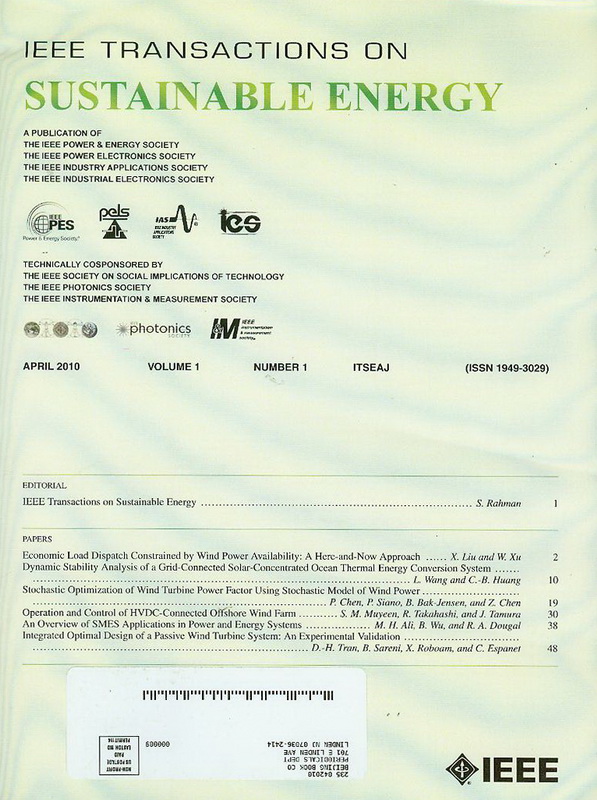基于动态模型的风氢系统碱性电解槽分级优化运行策略
IF 10
1区 工程技术
Q1 ENERGY & FUELS
引用次数: 0
摘要
保持风氢系统的输出功率在一个稳定的范围内对电力系统的安全至关重要。然而,大时间尺度的碱性电解槽(AWE)调度策略与风电短期波动之间的不匹配,对这一目标提出了挑战。为了解决这一问题,本文提出了一种新的分分钟级AWE运行优化策略。制定有效的小时间尺度策略需要详细考虑AWE动力学。为此,我们首先介绍了它的稳态电化学特性以及温度和氢氧比的三阶动态模型。基于这些优化模型,我们开发了一个AWE优化框架,通过每隔1分钟动态调整细粒度变量(如碱液流量、冷却流量和压力),使电解功率能够跟踪分钟级风力波动。为了克服详细建模带来的计算挑战,我们提出了一种改进的模型预测控制(MPC)框架。该框架结合了模型简化以提高计算效率,以及优化模拟迭代过程以确保操作可行性。案例研究表明,该策略将AWE负荷范围扩大了13.8%,减少了15.06%的弃风。此外,控制变量之间的协同作用使系统能够在运行效率、稳定性和安全性之间取得平衡,突出了这种方法在提高风氢集成系统性能方面的潜力。本文章由计算机程序翻译,如有差异,请以英文原文为准。
A Dynamic Model-Based Minute-Level Optimal Operation Strategy for Alkaline Electrolyzers in Wind-Hydrogen Systems
Maintaining the export power of wind-hydrogen systems within a stable range is critical for power system security. However, this is challenged by the mismatch between large time-scale of alkaline electrolyzer (AWE) scheduling strategies and the short-term fluctuations of wind power. To address this issue, this paper proposes a novel minute-level optimization strategy for AWE operation. Developing effective small time-scale strategies requires a detailed consideration of AWE dynamics. To this end, we first introduce its steady-state electrochemical characteristics and third-order dynamic models for both temperature and Hydrogen-to-Oxygen (HTO) ratio. Based on these refined models, we develop an AWE optimization framework that enables electrolysis power to track minute-level wind power fluctuations by dynamically adjusting fine-grained variables, such as the lye flow rate, cooling flow rate, and pressure, at 1-minute intervals. To overcome the computational challenges posed by the detailed modeling, we propose an improved model predictive control (MPC) framework. This framework incorporates model simplifications to improve computational efficiency, along with an optimization-simulation iterative procedure to ensure operational feasibility. Case studies demonstrate that the proposed strategy extends the AWE load range by 13.8% and reduces wind power curtailment by 15.06%. Additionally, synergies among control variables enable the system to achieve a balance between operational efficiency, stability, and security, highlighting the potential of this approach to enhance the performance of wind-hydrogen integrated systems.
求助全文
通过发布文献求助,成功后即可免费获取论文全文。
去求助
来源期刊

IEEE Transactions on Sustainable Energy
ENERGY & FUELS-ENGINEERING, ELECTRICAL & ELECTRONIC
CiteScore
21.40
自引率
5.70%
发文量
215
审稿时长
5 months
期刊介绍:
The IEEE Transactions on Sustainable Energy serves as a pivotal platform for sharing groundbreaking research findings on sustainable energy systems, with a focus on their seamless integration into power transmission and/or distribution grids. The journal showcases original research spanning the design, implementation, grid-integration, and control of sustainable energy technologies and systems. Additionally, the Transactions warmly welcomes manuscripts addressing the design, implementation, and evaluation of power systems influenced by sustainable energy systems and devices.
 求助内容:
求助内容: 应助结果提醒方式:
应助结果提醒方式:


